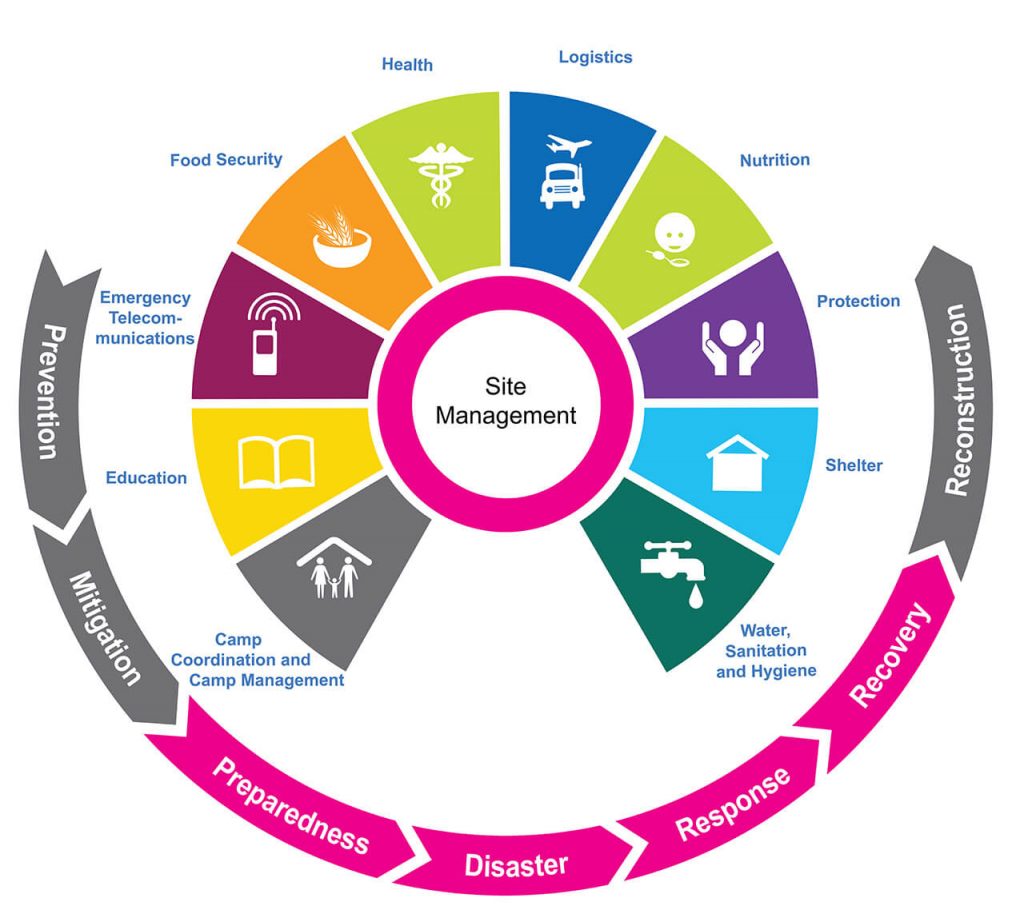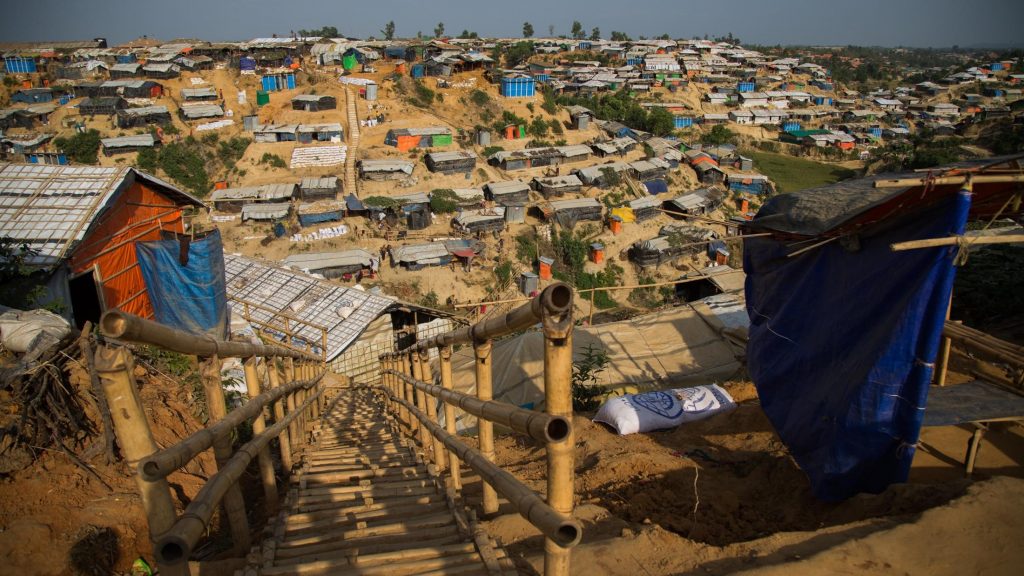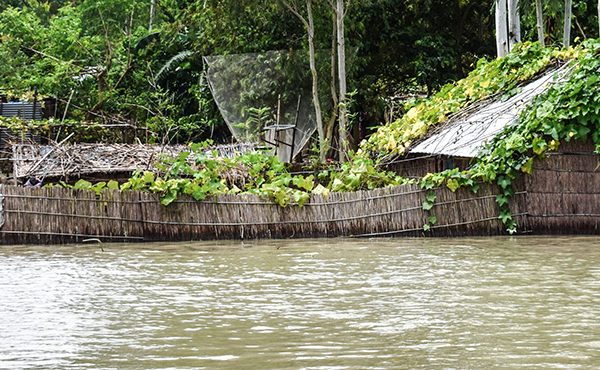Reading Time: 4 minutes
Humanitarian workers arriving from prior deployments such as Iraq, Lebanon, Damascus or Sudan share that they have never witnessed a crisis of such scale. When looking beyond the horizon of unending tarpaulin rooftops held up by bamboo sticks, across a hilly terrain; it seems like a miracle that a staggering 866,000 people have been living in 5,800 acres of makeshift settlements since August 2017.
Preparing for the upcoming monsoon
The rains have already started in Cox’s Bazaar – one of the most flood-prone regions in Bangladesh, and emergency preparedness and response is at the top of the agenda. The Bangladesh Meteorological Department predicts that the pre-monsoon rainfall in May will be above normal, with a risk of ‘’heavy pre-monsoon convective rainfall’’. Waterlogging is already an issue, with stagnant water posing the threat of a major outbreak of waterborne diseases.
Emergency measures are underway but a grim reality remains – of hilly locations, the weak mechanics of the soil from deforestation, and the slippery slopes and limited roads that make affected regions inaccessible.
Major concerns include access to emergency healthcare, damaged health facilities, and protection risks for women, children and vulnerable groups. UNHCR is distributing 250,000 bracelets for children through child-friendly spaces and temporary learning centres, so they can be identified if separated from their families.

ISCG, the intersectoral coordination group, which represents all the humanitarian partners, international agencies and NGOs stated that the window of opportunity for risk reduction and preparedness is closing.
The lack of useable, flat land remains a key barrier for relocations. They warned in a recent meeting that the current situation will likely result in deaths and a public health crisis. Organisations have been coordinating to take immediate emergency response measures for each sector.
This is the first time BRAC has undertaken a humanitarian response at this level. In order to understand how resources and life-saving efforts are being made at a systematic level, we need to understand site management in this context.
What is site management?
Managing the challenges of this sudden influx of people- who are deeply traumatised and vulnerable, into a small overcrowded space, divided into settlements and spontaneous sites is not a job done by one entity. Government administration, dozens of international agencies, local and international NGOs are currently working together to address the most pressing needs. Site management is at the centre of the multi sector system. It ensures the conditions in which men, women and children may safely reside and access services, which ranges from their welfare to their basic human rights.
Who is officially in charge of site management?
The Bangladesh Government administration set up Refugee Relief and Repatriation Commission (RRRC) in 1992 in Cox’s Bazar to address the forcibly displaced Myanmar nationals. The camps rapidly expanded since the recent exodus, and now has been divided into 20 blocks. The RRRC have appointed camp-in-charge (CIC) officers, each responsible for up to two camps.
These officers work to ensure that people in their blocks receive adequate access to basic services – food, health, protection, sanitation, shelter, security and additional services, by coordinating with relevant service providers.
Each officer is supported by the site management support agency, and an allocated organisation for site management. In this response, BRAC’s site management team has been allocated in camps 1 East, 1 West and the registered camp since December.
The sector approach
The sector approach has been specifically designed for such crisis situations, through an International humanitarian response system by the United Nations. It has been designed to strengthen the involvement and increase the effectiveness of the various agencies and stakeholders, non-governmental organisations and the site administration in each sector.

In the context of Bangladesh, specifically for this crisis, the Inter Sector Coordination Group has been formed to manage 10 sectors and coordinate with government administration. These sectors are site management, food security, health, nutrition, education, shelter, water, sanitation and hygiene, communication with communities, logistics, protection and early recovery.
Since the beginning of the crisis, BRAC’s response has evolved based on the respective sectors. BRAC’s humanitarian crisis management programme are now covering nine sectors – shelter and non-food items, WASH, health, nutrition, protection, agriculture and environment, education, communication with communities and the most recent one being site management.
Sector meetings
BRAC’s designated sector leads attend the regular sector meetings held by ISCG to disseminate necessary information from their respective sector. The site management sector group hold meetings twice a month, where they cover sector based updates and actors can discuss gaps in services, risk mapping and operational measures in the camps.
The most vital platform is the sector coordination meetings held in the CIC hubs within each of the camps. Weekly coordination meetings are held to discuss all camp based issues, and solve problems with representatives from each of the service providers working on the ground.

In each camp, CICs select and try to ensure democratic selection of appointed representatives from the community for forcibly displaced Myanmar nationals in their camp. Representatives are known as Majhi (leader) in the Rohingya dialect, each representing approximately 80 to 100 families. Official weekly meetings are held to hear their direct feedback and concerns on ground.
How is site management preparing for monsoons?
Thousands of families living in the camps, who are yet to recover from statelessness and trauma, are to face another life-threatening crisis.
The preparation task is critical in avoiding catastrophes such as landslides and contamination through waste and disease outbreaks. BRAC’s WASH sector is working around the clock to ensure latrines and waste management remain safe and effective. Latrines and tubewells which could risk contamination are being decommissioned and replaced. Water sources are being tested in BRAC’s own water testing laboratory from points around the camp on a daily basis to screen for contaminated tubewells.
The circumstances have become more challenging with the unpredictable rainfall. The site management and BRAC’s shelter teams are identifying vulnerable shelters, drainage systems and pathways in a race against time.

When the downpours begin, access to resources and health services, and mobility across the waterlogged areas in the sites will be severely affected. Site management is making crucial site improvements to slopes and drainage in their assigned camps. Currently, there are stairs carved through in the mud and soil which will easily erode and become slippery. We have been building sustainable drainage with bamboo linings, stairs and pathways to improve access around the camps.
International agencies, local NGOs and government agencies are coordinating to ensure suitable contingency plans to navigate through the five months of the monsoon season, with minimal loss of life. Site management is at the heart of the response mechanism- playing a pivotal role in providing a stable platform for all sectors to function.
Nafeesa Shamsuddin is the team lead of communications of BRAC’s humanitarian crisis management programme.





